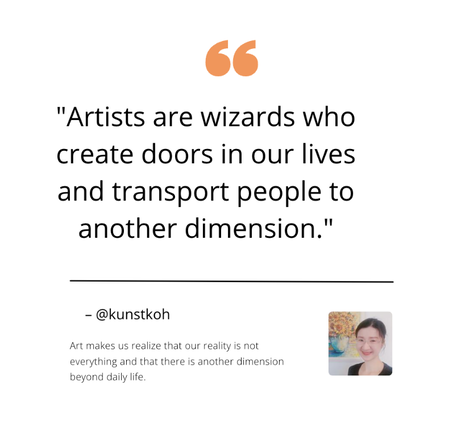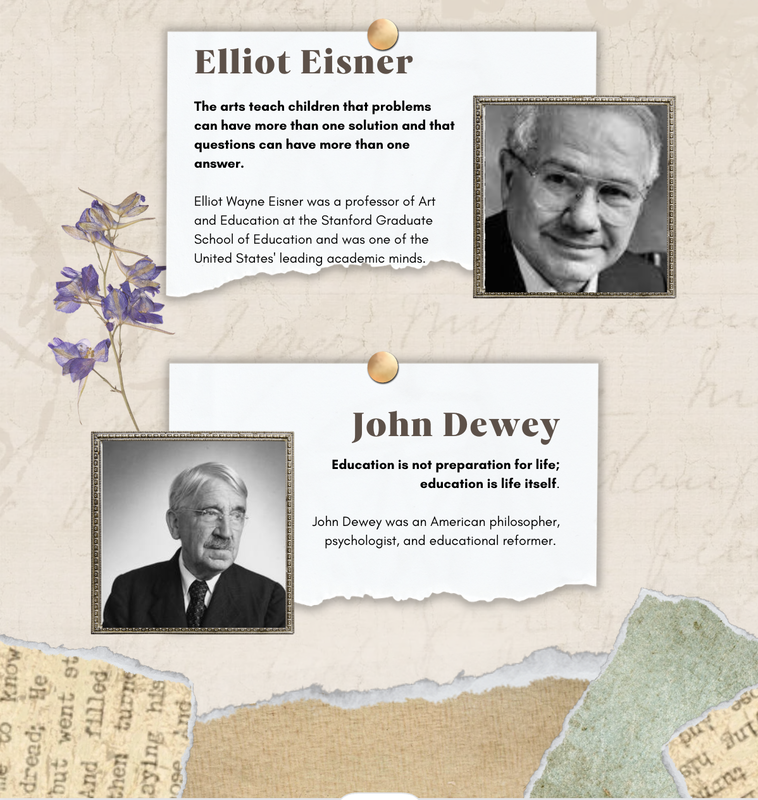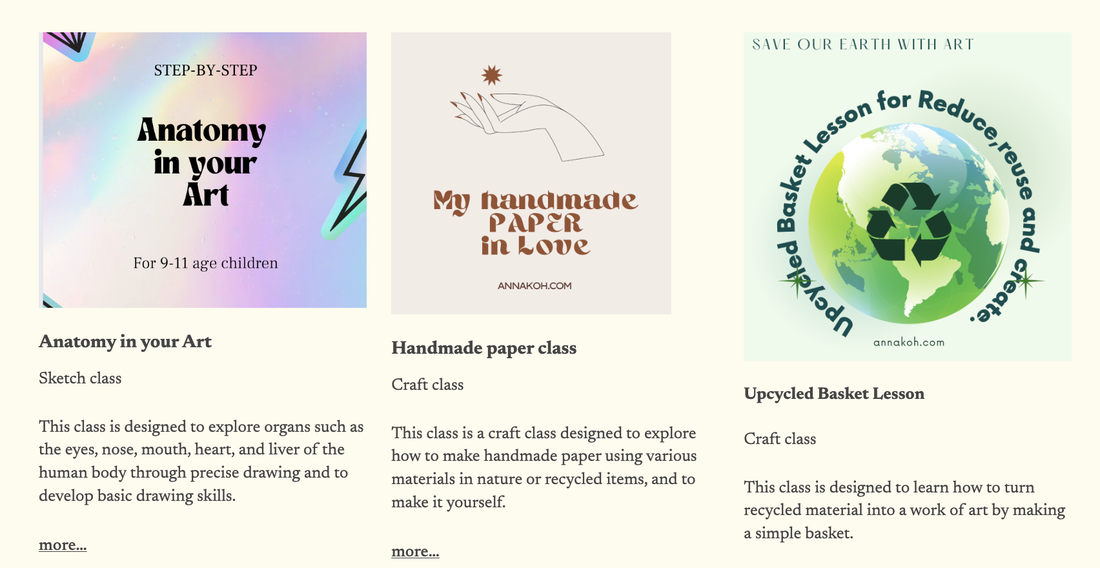Capstone Portfolio1. Studio/Art Portfolio:  Educational Artist: An educational artist from immigrants who understands immigrants well and an art social educator who can sympathize with others and create a desirable art community together due to various experiences and backgrounds. * Creative writer: A children's book writer who expands the possibilities of students, a creative writer who realizes "be Art, not Art," as Eric Booth claims. * Illustrator Inventor: A fun-discoverer who helps students find joy in art education, an art magician who tells us that art is exciting and exciting like magic, A human art warrior against artificial intelligence that protects the value of art and advocates students from a non-artistic world such as materialism. Below, I have also looked at the paintings I drew through this training and career process and collected paintings that are special to me in my own way. What I realized after that was that the beginning, current process, and end of my career were all along the same line. This is a meaningful discovery I made while writing this process portfolio. I have tried to capture the invisible energy of objects through my art world. And I discovered that this work coincided with humans’ small wish to know the way of the world. My early work and my current work after enlightenment have the following consistency. The beginning of energy has no choice but to face the extremely natural fate of falling asleep in death after an endless struggle with the homeostasis pursued by Mother Nature. This is neither sad nor happy, it is just a natural truth. In this respect, many similar philosophies and ideologies of the East and the West fit very well with homeostasis. In other words, this huge universe is also an emanation of energy that occurred after breaking a certain state that was originally stable, and this, too, will eventually lose all energy and become ‘nothing’ over time. It means you can go back. However, this nothingness does not simply disappear; it is another beginning, just as the beginning and the end are on the same line.  "The painting is like a dream. A painting is a world I create, can stop, and can change. Like a dream, I want to capture the energy that the unconscious creates. My unconscious mind creates the motives, colors, and moods. At the end of that unconsciousness, I reached the dream I wanted to achieve. It is about discovering the true beauty of things." As I was drawing trees like this, I suddenly felt the illusion that the flat canvas looked like space. This canvas was not paper, but the large door I faced as a child. Then I mustered up the courage to knock on the door and push it with my palm. Then the canvas changed from being a flat surface to a huge door. In that space, I discovered a framework that moves to another dimension beyond reality and pictures. This gave me infinite freedom. captured this spiritual experience and drew the images that came to my mind. And I experienced that images drawn in my mind and invisible images were shown beyond the space of the picture. I finally began to understand the painting I was most curious about, Velazquez's Las Meninas. The exact space he wanted to talk about a long time ago. I opened the door to another world in front of that space. 2. Teaching Portfolio: "It's slow, like a snail, but I want everyone to make it together." 3. Research/Interview Portfolio:
Areas I would like to research include:
Questions to learn more about your visual model for the arts, topics, and networks in the field, and your passion for the arts. - What is your source of inspiration? And what is the first thing you do to get this inspiration? -If you were to become a student, what area of art would you most like to learn about? -What training did you have, and what path did you follow to do what you do? - Does your artistic work attempt to reflect diversity, such as gender, culture, race, or religion? As an artist, what are your thoughts on diversity? - Please tell us about your working style. Do you prefer to work alone? Or do you often interact with other artists and organizations? Do you have your own unique work style? - In what ways do you think the medium you chose can sufficiently express your artistic world? - What would you do if students tried to use creative materials other than the medium you suggested? - Please describe what you consider to be an obstacle to your work. These obstacles may include factors such as prejudice against women, barriers to engagement, and lack of support from the fund. What are your obstacles? - What is the balance between your art business and art making? - How do you deal with students who are bored or lack interest? - Do you think your teaching influences your studio work? -Which aspect would you emphasize to your students: skill or creativity? Why? - Maxine Greene said, “Part of teaching is helping people create themselves.” How do you support students to be self-directed and creative? -Sir Ken Robinson, one of the famous educational scholars, criticized the uniformity and lack of flexibility in current public education through a lecture entitled ‘Do schools kill creativity?’ From the perspective of creativity, what do you think about art education in current public education? -If your students are skeptical and negative about an artist's career and profession, what educational philosophy would you approach these students with? Please let me know if you have ever encountered a student like this. * Capstone portfolio design: It is conducted on a team basis and is very helpful in fostering creativity, teamwork, and leadership, and is also called creative comprehensive design. It originated from the last capstone placed on the roof or wall when building a house in a foreign country.
0 Comments
Leave a Reply. |
Myungja Anna KohArtist Categories
All
Archives
July 2024
|
Proudly powered by Weebly

















 RSS Feed
RSS Feed